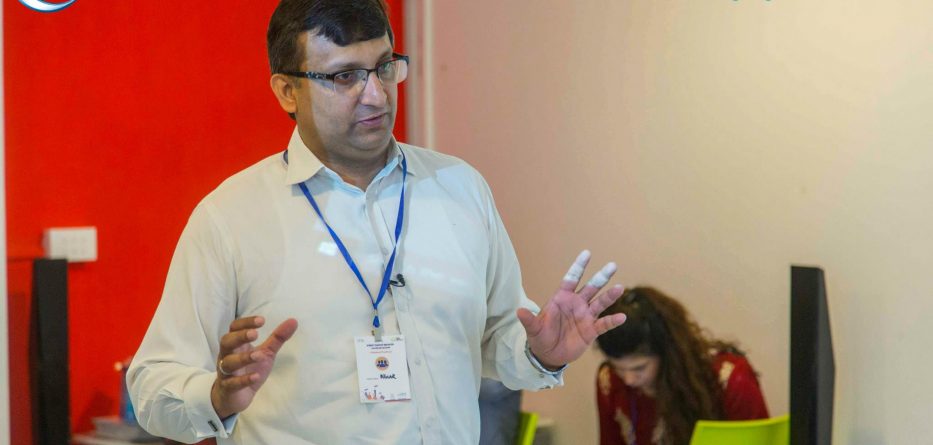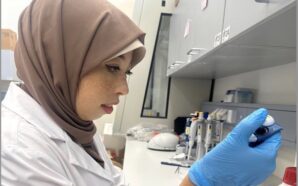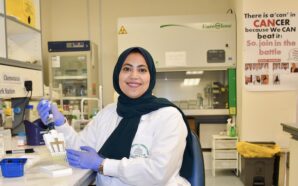Education, awareness and innovation can play a pivotal role in changing the patriarchal mindset of societies. Pakistan Innovation Foundation (PIF), recently concluded a groundbreaking initiative that invited technologists, designers, communicators to propose ideas, suggestion that could empower women to #TakeBackTheWheel. Founder and CEO, Athar Osama sheds light on PIF’s pioneering efforts that is poised to bring about a positive change all across Pakistan.
Pakistan Innovation Foundation (PIF) is an apolitical and non-partisan private-sector driven entity charged with developing and executing an analytically rigorous, evidence-based, and deeply passionate agenda to promote science, innovation, and entrepreneurship in the Pakistani society.
- Tell us about the initiative and why now?
Women economic empowerment is a major challenge in our society. And access to safe, affordable, and respectable transport is a series bottleneck to empowerment itself. We all know the circumstances in which women who get out of their houses to go to school or work to earn a living have to use our public transport. Many women are harassed on a daily basis in a bus, taxi, or rickshaw. Drivers often exploit them and charge exorbitant sums.
Monis Rahman, the Founder of Rozee.pk – Pakistan’s largest job site – quotes the following figures: “Men spend between 5-10% of their incomes on transport, while women spend as much as 50%”
These numbers are mind-boggling. Imagine the barrier that transportation erects for women seeking to join the workforce. This rings true in my personal experience as well. Over the last couple of years, we’ve hired or made offers to several women who commute on a daily basis from Rawalpindi and we know how challenging it gets for them, financially and psychologically, to navigate this exploitation by the transport mafia.
I’ve been thinking about doing this for a couple of years now but this September the time just seemed right and we decided to launch the first ever Women’s Transport Innovation Challenge to help find creative ways to solve this important issue for Women.
- As far as this initiative is concerned, who were you targeting?
We were looking towards innovators and communicators, technologists and developers, product designers, behavioral scientists and change agents, social and women rights activists to join hands to come up with innovative ways to addressing this problem. I think this is a very complex problem with social, cultural, religious undertones. Some solutions would probably be short term – kind of band-aid – and others would seek to address problems in the long run.
Technology for instance could be provided as an interim solution while behavioral change may take a long time to happen. But sometimes progress in one aspect makes way for the other. For instance, as technology makes it possible for women to travel alone or find and carpool with other women traveling alone, this becomes more acceptable in the society and hence behavioral change becomes easier to achieve.
- How can tech empower the Pakistani ordinary woman?
Tech can be a very important short-term solution, if nothing else. The world over mobile apps that connect users with a common cause or need are becoming more and more popular. Uber is a case in point, although there are challenges with that model particularly when it applies to women’s transport. In Pakistan Savaree is another such venture, which recently launched a carpool app and is growing slowly to substantial numbers. She’Kab is another such venture that was recently launched in the Capital. So, I think there are various avenues of using technology – particularly mobile-based apps – to help address the challenge. For these to be useful, however, there needs to be infrastructure on the ground. Technology must also address the issue of security properly and convincingly for it to address the challenge of women’s transport.
- What initial feedback did you receive as far as the initiative #TakeBackTheWheel is concerned?
We received more than 75 registrations/ideas to begin with. We shortlisted about 30 to invite to an initial pitch and 12 of these teams were invited to participate in a Hackathon. The teams worked hard to propose innovative solutions to the problem and create prototypes.
In the end, we declared four winners but even many of those that did not win were not bad at all. In fact, the Hackathon is just the beginning of the process. Our experience suggests that the winning teams need a lot of mentoring and work even after the Hackathon; clarifying ideas, refining the design, and preparing to take it to the next level.
We plan to organize an Innovation Accelerator to help the teams take their ideas forward. We have already begun interviewing the teams – some winners but also other groups – in detail to discuss how to structure this. Ultimately, an idea is only 1% of success, implementation constitutes the rest of the 99%.
That’s where the mettle of the teams and their passions to make a difference really gets tested.
- In order to make this initiative a success, you need to engage a wider audience – how do you plan to do that?
The Women’s Transport Innovation Challenge is just a start of an effort to find solutions for a very complex problem with deeply entrenched social, economic, cultural, and religious roots. What we have been able to do, over the last month or so, is to bring spotlight to this issue.
We were very fortunate to have partners like Toyota Pakistan and UN Women that brought muscle and credibility to this exercise. UN Women, in particular, are very passionate about this issue, as they need to be, not just the quick-fix technological solutions but also the long-term behavioral solution. Their HeforShe global campaign is the step in the right direction.
We also did a pretty decent job in mobilizing public opinion and support through the social media. We have a great social media team and partners like Aisha Sarwari and Huma Beg who are themselves activists and believers in the cause. We organized a twitter chat that roped in many opinion-makers from around the world from Adil Najam to Bina Shah, and Shaista Aziz to Jamshed Kazi, among others. My most favorite moment was to be retweeted by Helen Clarke, the former Prime Minister of Netherlands and the current Head of UNDP.
We have been lucky with some other developments coinciding with and magnifying our own efforts. A girl from Lahore rides a motorcycle through the northern areas; a famous artist drives a pink rickshaw through the streets of Lahore; and a new contingent of women traffic wardens ride their bikes through Islamabad and suddenly you might find the tide shifting on this issue. Ultimately, its all about perception and what is acceptable and what is not in the society. And perceptions, we all know, can change rapidly.
I think we have created a wave whose ripples will felt for sometime.
- What role can men play in this initiative and how important is diversity/inclusiveness to #TakeBackTheWheel?
We made no distinction in inviting men and women to the party. In fact, although we expected more women to attend, there were probably a few more men in the room at the Hackathon than women. Jamshed Kazi, the head of UN Women Pakistan commented about that. That’s actually not a bad thing since I think men need to stand up for equal rights of women and the male gender must be the focus of behavioral change. Owais Zaidi, one of our judges remarked that “the problem won’t be solved by putting women in a separate box of a transport, it would only be solved by changing the mindsets of men.” He is super right.
I think in the end solution must come in the form of behavioral change. However, I am not sure if there is one silver bullet or one single step that would make this change happen. Behavioral change works in non-linear ways. There is no progress for a long time and then suddenly there is light. In man ways its like the four minute mile, I guess.
So until that radical shift happens, I think technology and product design can provide some interim relief to women on public transport systems whether these are in the form of women carpooling arrangements or women only transport solutions.
- What does PIF plan to achieve via this campaign?
Pakistan Innovation Foundation is determined to bring about a change by enabling Pakistanis to use creativity and innovation to help solve the country’s problems and challenges. We believe that many problems that have remained unsolved for years or decades require a fresh out-of-the-box approach. We are looking to find innovative ideas that can help address the challenge of women’s transport. We would like to take the more promising of these ideas forward and enable these innovators to find partners and sponsors to pilot test and hopefully scale some of these ideas.
I think PIF has very much achieved what it embarked upon to achieve. Among the winners and others there are a number of very promising ideas – carpooling solutions, security apps, flexible partitions for public transports, and new innovative transport modes and services – that need some refinement and entrepreneurial teams to take them forward.
We believe this is a good start and some of these ideas will ultimately see the light of the day.
Image Credits: Pakistan Innovation Foundation











